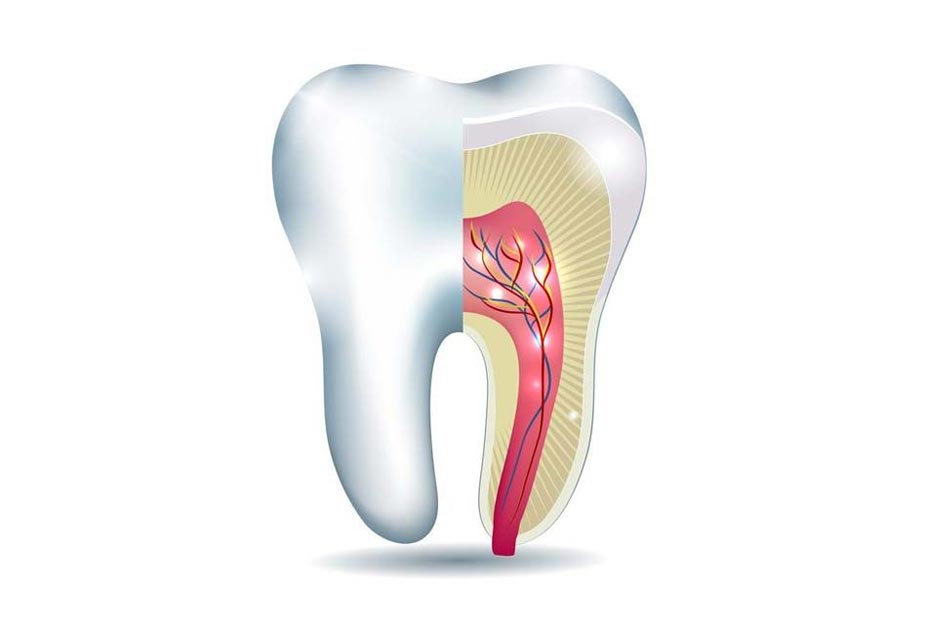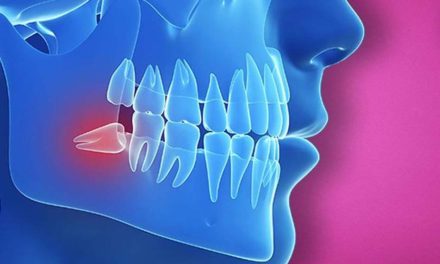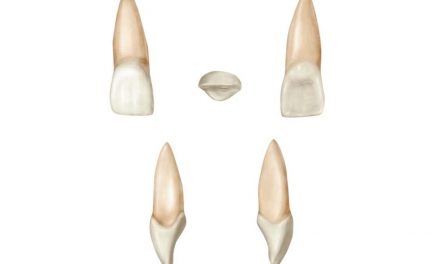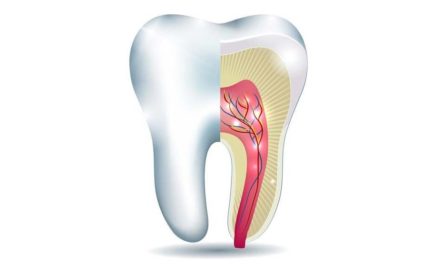Alveolar bone is a mineralized tissue contained in the jaw in which teeth are embedded within the corresponding sockets. Also called the alveolar process, this bone is part of the maxilla and the mandible, and is attached to the cementum of a root of a tooth through the periodontal ligament.

The region of the alveolar bone that attaches to the periodontal ligament is more compact, and is called lamina dura. When viewed on a radiograph, this region looks lighter (or more radiopaque) than the rest of the bone. The lamina dura’s integrity is important when diagnosing periodontal disease.
Throughout life, alveolar bone is modified like all other bone. Osteoblasts are cells that create new bone, and osteoclasts are cells that destroy it when force is applied on a tooth.
Functions of alveolar bone
The alveolar bone, along with the cementum and the periodontal ligament, is part of the periodontium, which is a specialized network that supports teeth. The alveolar bone has specific functions:
- Attachment. The alveolar bone is one of the tissues that provide attachment of the teeth to the jaws.
- Protection. The hardness of the bone provides protection to the sockets where teeth are embedded.
- Support. The alveolar bone supports the roots of teeth because it surrounds them.
- Shock absorber. The alveolar bone helps absorb the forces placed upon teeth by disseminating those forces to underlying tissues.
Diseases of the alveolar bone
Periodontal disease starts as inflammation in the gum tissues. If left untreated, it can spread to the alveolar bone, which would trigger its destruction (bone loss). When too much bone is gone, teeth start moving, and may eventually fall out. Gingival inflammation is the most common cause of alveolar bone loss.
Trauma from occlusion can lead to bone destruction. When occlusal forces (biting forces) exceed the capacity of adaptation of the alveolar bone, injury occurs on it.
Periodontal abscess may follow periodontal disease, which would need immediate treatment.
Systemic disease. Alveolar bone can be affected secondarily to some systemic diseases, like vitamin D deficiency, diabetes, hyperparathyroidism, leukemia, Paget’s disease, fibrous dysplasia, osteomyelitis, central giant-cell granuloma, aneurysmal bone cyst, and X-type histiocytosis.
Alveolar bone grafting
An alveolar bone graft is a surgery that adds bone to the gum ridges when needed, either for functional or aesthetic reasons.
For patients that suffered from cleft lip and palate, alveolar bone graft may be part of the reconstructive surgeries. Bone grafting repairs the hole in the gum ridge that was consequence to the cleft. It also stabilizes the bone arch, offering improved support for the base of the nose. New bone will provide better support for the roots of the developing teeth to grow into.
When placing dental implants, healthy bone is needed with an adequate amount. When not enough bone is available, alveolar bone grafting may be performed prior to placing dental implants.
Reference
- Naudin C., Grumbach N., Larousse Médical, 3ième édition, Paris, 2003.
- Marcovitch H., Black’s Medical Dictionary, 41st edition, London, 2005.
- Leikin J. B., Lipsky M. S., Complete Medical Encyclopedia, First edition, New York, 2003.
- Wikipedia, the free encyclopedia, Alveolar process.
- UPMC Children’s Hospital of Pittsburgh, Alveolar Bone Graft.
- ScienceDirect, Alveolar Bone.





